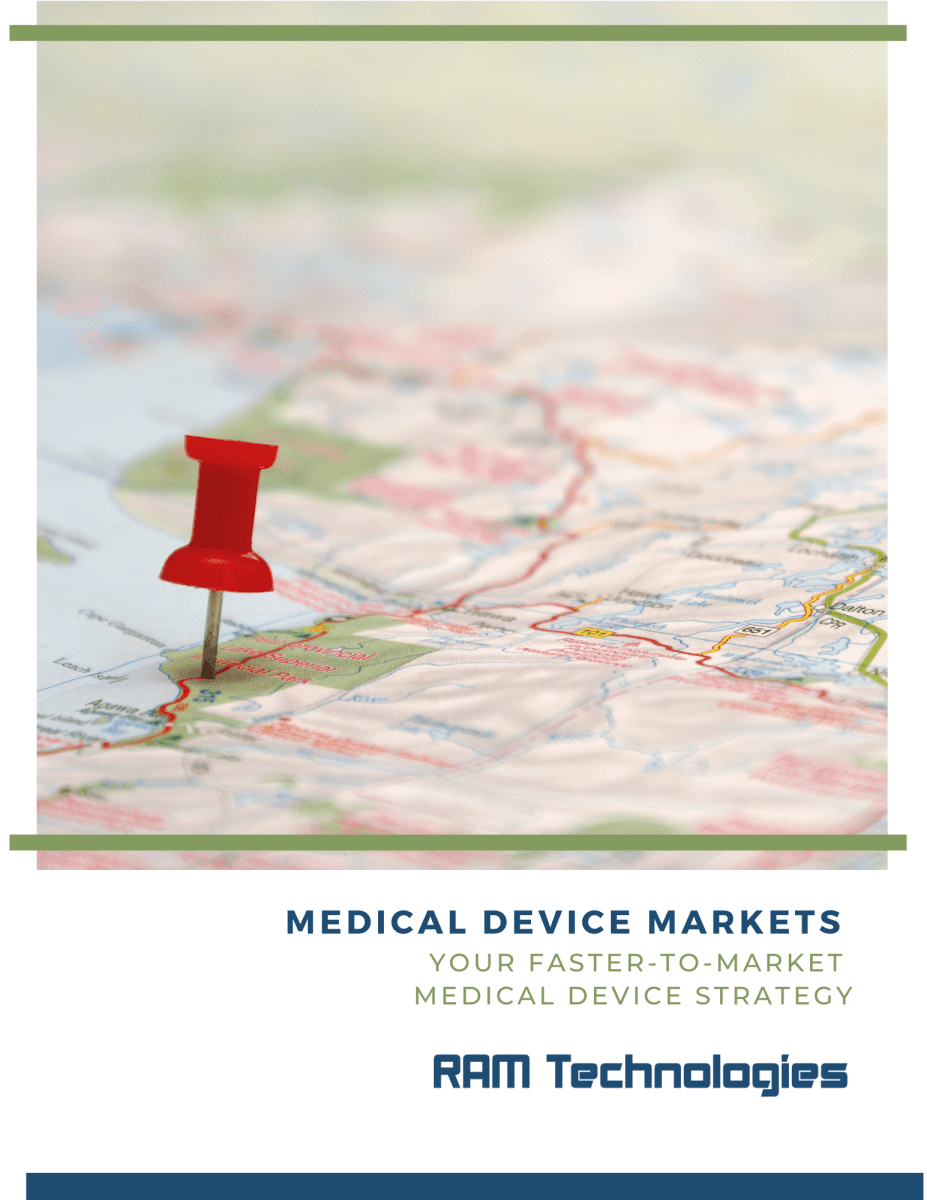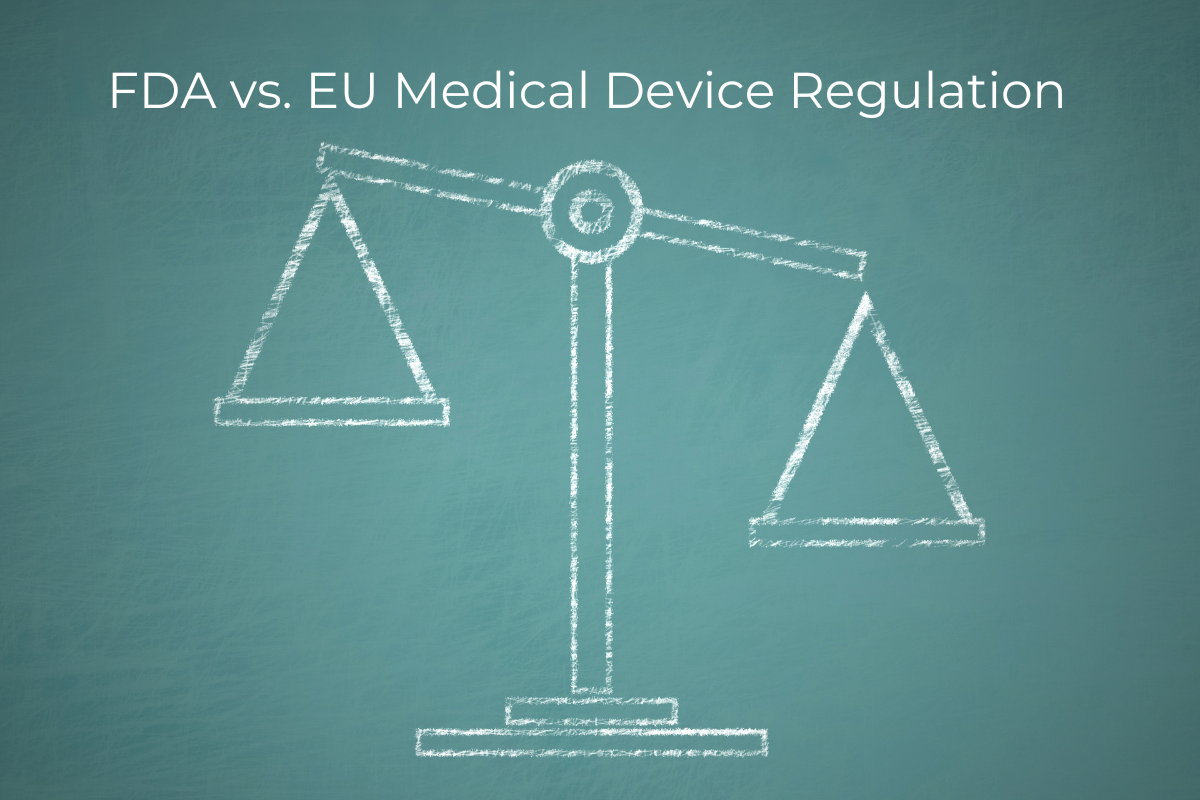FDA vs. EU Medical Device Regulation – Where should you sell?
If you’re in development with a medical device, you might be wondering where you should seek approval for your product – the United States or the EU. We’ll cover what it takes to get your medical device approved in both regions to help inform your decision-making process.
What’s the difference between FDA vs. EU regulations?
If you’re looking for the latest on regulatory matters, QRA Medical is a great resource. Many of these takeaways are available on their video explaining the difference between markets.
Medical device approval in the EU
Devices that sell in the EU need to comply with Medical Device Regulation (MDR), also known as EU No. 2017/745. Using Annex VIII of the MDR, you will classify your device based on level of risk, ordered from least to most:
- Class I
- Class IIa
- Class IIb
- Class III
Unless there is a measuring, sterile, or reusable function to a Class I device, manufacturers can self-certify. For all other devices, you will need to work with a Notified Body to get a conformity assessment, an organization that has been designated by the EU to assess whether or not your product conforms to guidelines before it goes to market.
Once a medical device passes the conformity assessment, you can make a Declaration of Conformity (DOC) as per Annex IV. The DOC is an assertion that your device is in compliance with EU requirements. From there, you can apply the CE mark.
For more information on obtaining the CE mark in the EU, check out one of QRA’s other videos.
Since the MDR took effect in May 2021, there is still a backlog in availability for notified bodies. Right now, device manufacturers may have to wait 12-24 months for a conformity assessment. These timelines don’t include the time that may be added for questions or revisions.
One of the biggest issues with this backlog is that each notified body only covers a scope of products. Even if there’s one available, if they don’t deal in your product, you can be out of luck. Notified bodies can be found in the Nando database.
It costs anywhere from €20,000 – €100,000 to work with a notifying body.
Medical device approval in the U.S.
In the USA, medical device manufacturers will be dealing with the Food and Drug Administration (FDA), a federal agency. The FDA has risk classifications similar to the EU:
- Class I
- Class II
- Class III
Depending on the type of device some class I and class II medical devices can come with exemptions. Most of the 47% of medical devices that fall under the class I category are exempted from regulatory processes (95%). While manufacturers don’t need premarket notification applications and FDA clearance for exempt devices, they will need to list their product with the FDA and register their establishment.
Class II medical devices may have specialized controls and can carry a moderate to high risk to the user and/or patient. Class III devices are associated with higher risks of illness, injury, or potentially death.
To identify product types, the FDA uses a three-letter product code. Your device should fall under one of the product classifications listed in 21 CFR 862-892.
A premarket submission device manufacturers will need to make with the FDA is called a 510(k) process. This shows that the product you are putting on the market has substantial equivalence to a device that’s legal and already on the market. You can search the FDA database for these devices.
If you can’t prove substantial sameness, your device will be considered “novel” and will need to go through the de novo process, which includes a de novo classification request.
The timeline with the FDA largely depends on the pathway. For 510(k), the average clearance is 6 months, but it can be faster depending on your device category, whether additional questions need to be asked, and so on. The de novo pathway takes a lot longer – 16 months on average.
When it comes to cost, the U.S. tends to be the more affordable option. The 510(k) pathway is $19,870, or $4,967 if you qualify for a small business discount. The de novo pathway is $132,464 or $33,116 if you qualify for a small business discount. However, it’s important to keep in mind that these options don’t include product staff, consultation costs, or any additional costs you might incur on your way to market.
Considerations for either region
Deciding where to take your medical device to market needs to take into account more than the cost and the timeline. You should also ask yourself the following questions:
- What problem am I trying to solve with my product?
- Who is my product designed for?
- Is that population represented in the region where I’m looking to sell?
- How many people in that region would benefit from my product?
Final thoughts on FDA vs. EU Medical Device Regulation
Understanding your market, the difference in regulation standards, and thinking about what will make the most sense for your particular product are important steps to take before looking to gain approval anywhere. You may need to weigh what’s more important to you – getting to market first to gain a competitive edge, or taking your time to get to the market where you’ll have the greatest impact.
For medical electrical (ME) devices, you’ll also want to brush up on IEC 60601-1 3.2 and be sure you have PSUs that are compliant with the latest standard. RAM Technologies’ PFC800PCX and PFC600PCX PSUs are compliant and have been approved under IEC 60601-1 version 3.2. To learn more about our products or ask us a specific question, contact us today.
________________________
RAM Technologies’ power supplies are 60601-1 3.2 certified and meet 60601-1-2 EMC standards. When you’re designing your medical device and need help with a PSU, contact us for details.

Download the Markets Guide
This guide covers the basics on medical device markets, including emerging trends, current regulations, and market adoption strategies. Sign up and download it for free now!



